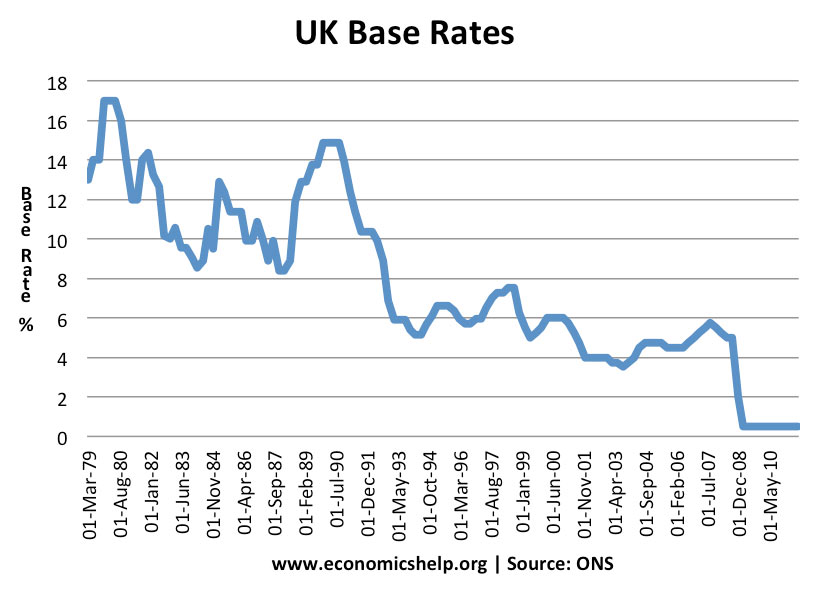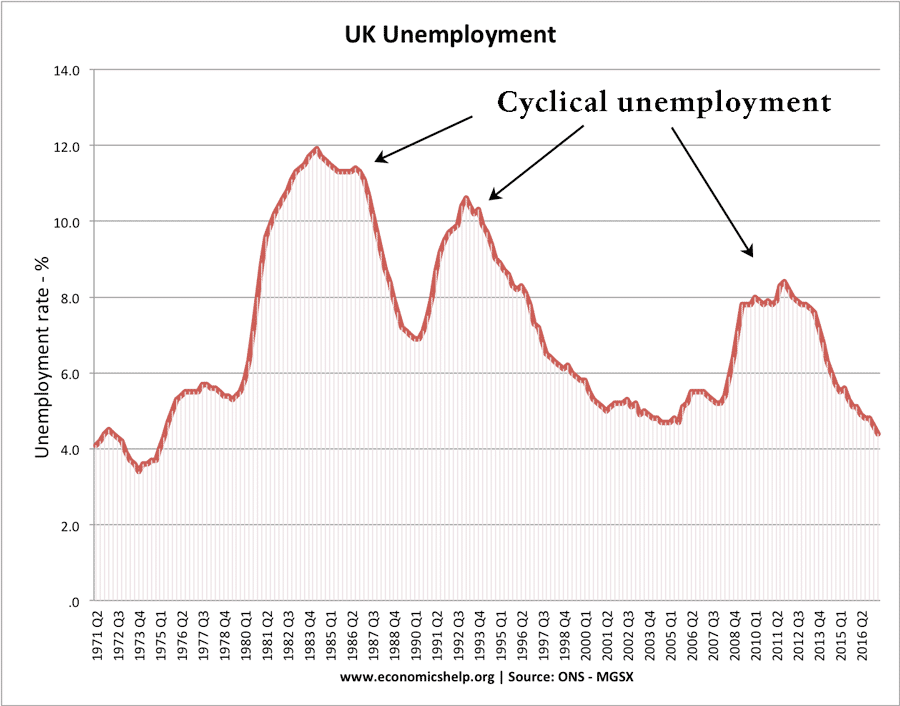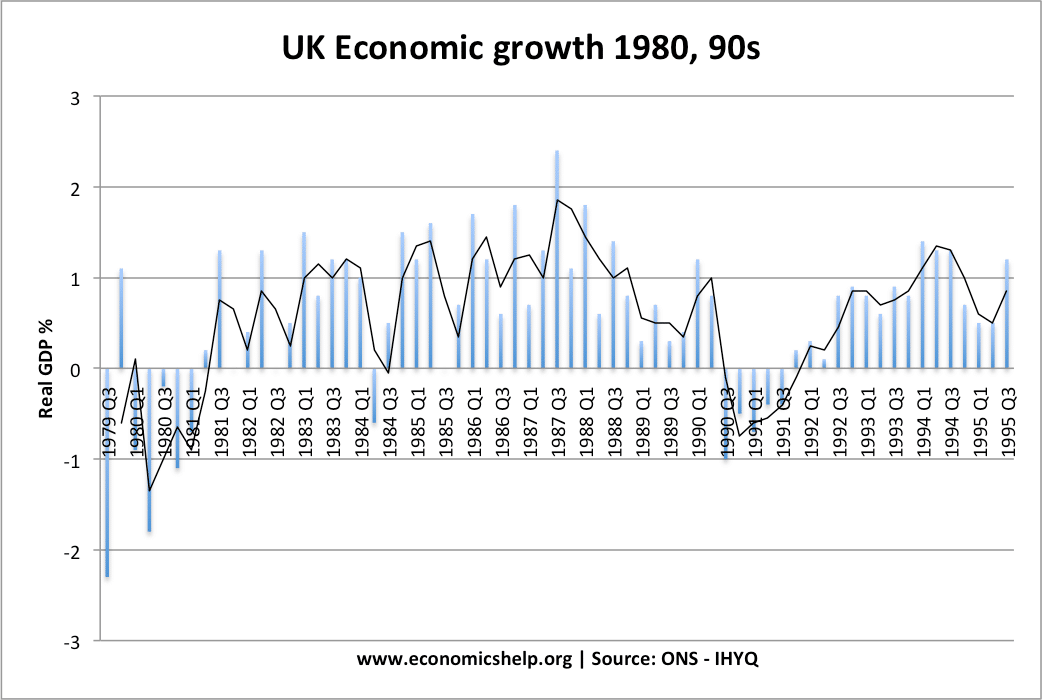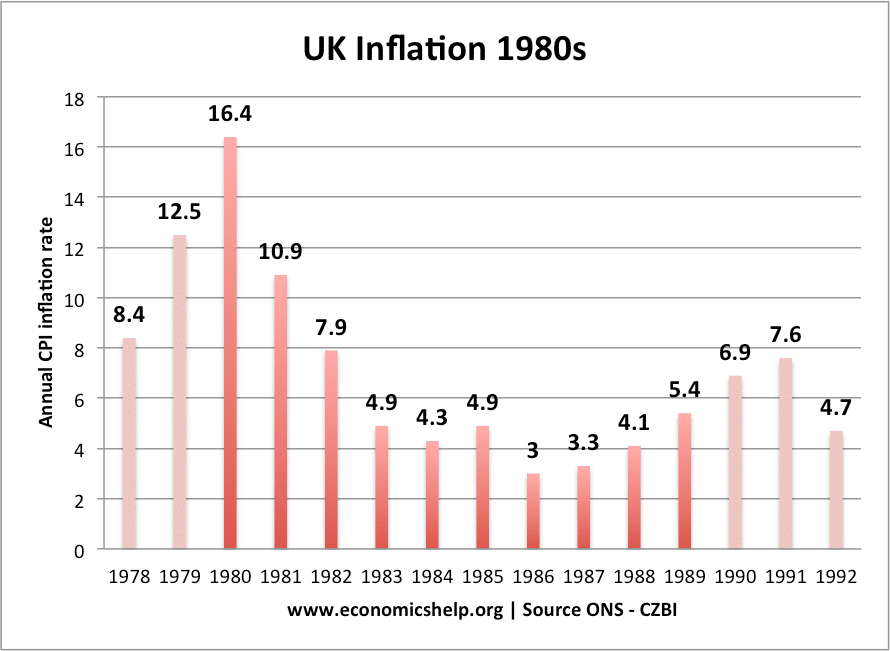During 1980-81, the UK entered a recession – with falling output, rising unemployment and a fall in the inflation rate. The recession particularly hit manufacturing sector. The recession was caused by high-interest rates, an appreciation in Sterling and tight fiscal policy.
In 1979, the incoming Conservative government inherited an economy with inflation in double figures. (April 1979 inflation was 10.1%). Also, many industries were considered inefficient, and trades unions were powerful. There had been a winter of discontent with many strikes taking place in the late 1970s. See: Economy of the 1970s
UK economic growth 1979-1995
On coming to power, the government adopted a Monetarist approach to try and tackle the various economic problems of the UK.
In particular, their overriding macroeconomic objective was to reduce inflation which peaked in 1980 at around 18%.
UK Inflation Since 1979
To Reduce Inflation The Government

- Raised interest Rates (tightening of Monetary Policy)
- Tightening of Fiscal Policy to reduce the budget deficit. This involved increasing taxes and restricting government spending. Higher taxes reduced disposable income and therefore reduced consumer spending. (Monetarists believe that a budget deficit is likely to cause inflation because to finance it the govt may be tempted to increase the Money Supply)
- Sticking to strict Money Supply targets for M3. Monetarist theory states that inflation is caused by excess growth in the money supply. Therefore, it is necessary to control the growth on money supply to reduce inflation.
The effect of these policies was:
- Reduce consumer spending, investment and exports. Therefore there was a decline in Aggregate Demand and hence economic growth.
- Increase in the exchange rate ( as well as higher interest rates, the production of oil in the north sea caused a rapid appreciation in Pound Sterling) Exporters struggled to cope with the rapid appreciation because it made their exports less competitive. Many industries who relied on exports went bankrupt. Manufacturing output fell by almost a third during the recession.
- Inflation was brought under control
- Rise in unemployment. Unemployment rose to over 3 million and didn’t fall below 3 million until 1986.

The recession of 1980-81 caused a sharp rise in unemployment. Initially, this was demand deficient unemployment, but it also caused structural unemployment with many people who lost their job in manufacturing struggled to find new jobs.
- Real GDP fell by 2.2% in 1981
The government argued that the recession was necessary to shake up the economy and get rid of inefficient firms. It is true that some firms were inefficient, but most economists would argue that the recession was deeper than it needs to be. With the rapid appreciation of Sterling many good firms also went bankrupt.
Targeting the money supply proved to be a futile task because money supply growth proved to be very erratic and there was no direct link between inflation and Money supply. By 1985 the govt had effectively abandoned Monetary targets.
Trade Union power was reduced by both political legislation and also the decline in manufacturing firms where trades unions used to be very strong.
See also
Last updated 11 Nov 2017



5 thoughts on “UK Recession of 1981”
Comments are closed.